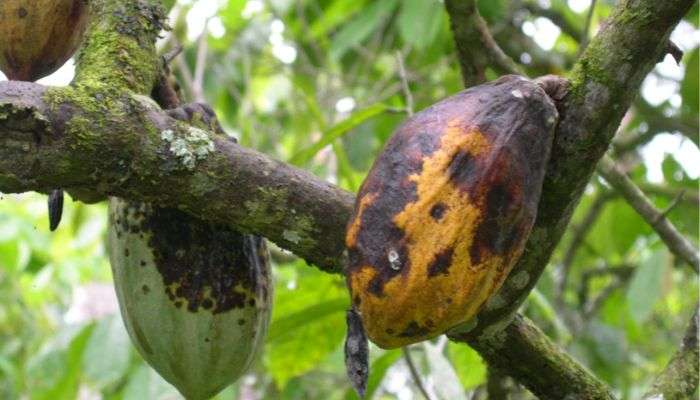Cocoa output seen shrinking 15% on black pod disease
“Lots of cocoa were affected by the black pod disease owing to the excessive rains in major producing states and the flood incidents,”
- Advertisement -
Nigeria’s 2021/2022 cocoa main crop output is seen shrinking by 15 percent as fungi black pod disease attacked farms, the industry association has said.
This is following the flooding incidences and heavy rainfall in the main producing areas.
- Advertisement -
“Lots of cocoa were affected by the black pod disease owing to the excessive rains in major producing states and the flood incidents,” Mufutau Abolarinwa, national president of the Cocoa Association of Nigeria, told BusinessDay.
- Advertisement -
“The impact is quite huge and we see output for the season declining by at least 15 percent,” Abolarinwa said.
He said the season was delayed by two weeks, and a scramble for quality cocoa beans has pushed the prices of the commodity higher as floods ravaged farmlands in Taraba and Cross River states
According to the Cocoa Research Institute of Nigeria, black pod, a fungi disease, thrives in wet conditions on cocoa farms due to incessant rains without adequate sunshine.
The farm gate prices of cocoa, Nigeria’s flagship export produce, have surged by 77 percent this year, BusinessDay’s analysis of prices in key producing states shows.
In the international market, the price of cocoa beans has declined marginally since Russia invaded Ukraine as a metric tonne (MT) sells for $2,368 per tonne on Monday, down from an average of $2,448 per tonne in January, according to data from the International Cocoa Organization (ICCO).
Nigeria is the world’s fourth top grower of cocoa with 250,000MT, ICCO said in its third quarter bulleting, and a 15 percent decline means the output will dip by 37,500MT.
However, ICCO forecasted Nigeria’s production to reach 280,000MT in the 2021/2022 season.
The country has two cocoa harvest seasons: the smaller mid-crop from April to June and the main crop from October to December.
- Advertisement -
The main crop accounts for about 70 percent of Nigeria’s cocoa output while the mid-crop accounts for 30 percent of the total production for the season.
“We have lost over 70 percent of cocoa fruiting due to fungi black pod disease as a result of the heavy rains in Cross River state,” Sayina Rima said by phone from his Ikom farm in the South-South region.
“The whole place is supposed to be littered now in Ikom with cocoa beans because we are in the main season but that is not the case because of the shortfall in output,” Rima added.
According to him, cocoa farmers are supposed to profit from the weak naira, but owing to the low output and high cost of agrochemicals, farmers are not benefitting from the current currency fluctuation.
He thinks that the main-crop cocoa output might cause a decline in the country’s position in the global league of cocoa-producers when the figures for the full season will be released next year.
Zacheaus Egbewusi, chief executive officer of Agri Commodity Inspection Limited, told BusinessDay that there are no sufficient cocoa beans in the market, even in key producing states.
“I have received just 30 metric tons since the season started, unlike before when I would have got over 100 metric tons,” Egbewusi, a cocoa trader, said.
“Heavy shipment is supposed to be ongoing now but there are very few occurring because there are not many beans in the market and the prices have gone higher because of the huge demand.”
Globally, grinding activities in Europe and North America declined by 1.5 and 3.4 percent respectively, but increased in South East Asia by 9.5 percent in the third quarter of 2022.
“The latest mixed grindings data suggest that cocoa demand at the start of the 2022/23 season remains uncertain due to the current global macroeconomic narrative on high inflation, interest rates, slow growth, and concerns about energy price increases,” ICCO said in an October note.
Source: norvanreports
- Advertisement -


